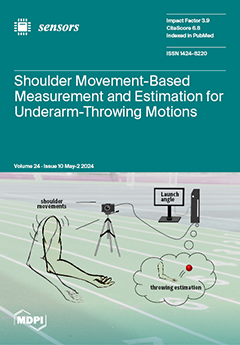In recent years, hydrogel-based wearable flexible electronic devices have attracted much attention. However, hydrogel-based sensors are affected by structural fatigue, material aging, and water absorption and swelling, making stability and accuracy a major challenge. In this study, we present a DN-SPEZ dual-network hydrogel
[...] Read more.
In recent years, hydrogel-based wearable flexible electronic devices have attracted much attention. However, hydrogel-based sensors are affected by structural fatigue, material aging, and water absorption and swelling, making stability and accuracy a major challenge. In this study, we present a DN-SPEZ dual-network hydrogel prepared using polyvinyl alcohol (PVA), sodium alginate (SA), ethylene glycol (EG), and ZnSO
4 and propose a self-calibration compensation strategy. The strategy utilizes a metal salt solution to adjust the carrier concentration of the hydrogel to mitigate the resistance drift phenomenon to improve the stability and accuracy of hydrogel sensors in amphibious scenarios, such as land and water. The ExpGrow model was used to characterize the trend of the ∆
R/R0 dynamic response curves of the hydrogels in the stress tests, and the average deviation of the fitted curves
was calculated to quantify the stability differences of different groups. The results showed that the stability of the uncompensated group was much lower than that of the compensated group utilizing LiCl, NaCl, KCl, MgCl
2, and AlCl
3 solutions (
in the uncompensated group in air was 276.158, 1.888, 2.971, 30.586, and 13.561 times higher than that of the compensated group in LiCl, NaCl, KCl, MgCl
2, and AlCl
3, respectively;
in the uncompensated group in seawater was 10.287 times, 1.008 times, 1.161 times, 4.986 times, 1.281 times, respectively, higher than that of the compensated group in LiCl, NaCl, KCl, MgCl
2 and AlCl
3). In addition, for the ranking of the compensation effect of different compensation solutions, the concentration of the compensation solution and the ionic radius and charge of the cation were found to be important factors in determining the compensation effect. Detection of events in amphibious environments such as swallowing, robotic arm grasping, Morse code, and finger–wrist bending was also performed in this study. This work provides a viable method for stability and accuracy enhancement of dual-network hydrogel sensors with strain and pressure sensing capabilities and offers solutions for sensor applications in both airborne and underwater amphibious environments.
Full article






